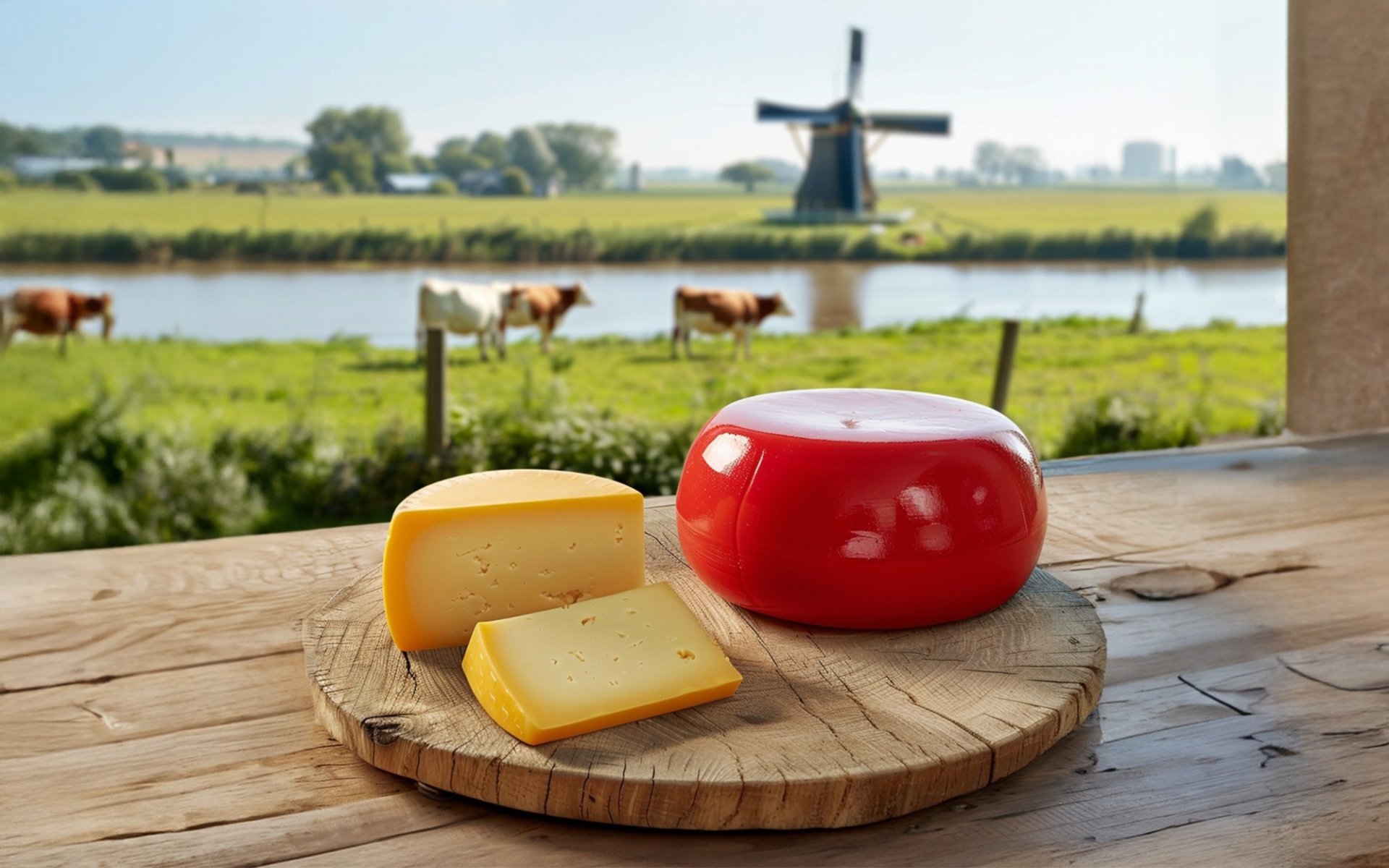Edam Cheese

Edam Cheese is a renowned cheese originating from the Netherlands. It is characterized by its spherical shape, coated with a red or yellow wax rind. Made from pasteurized cow's milk, it has a pale yellow color, a nutty aroma, and a texture similar to Gouda Cheese but with a lower fat content. Today, Rimping Supermarket invites you to explore the long history of this cheese.
Origins in Edam City : 14th Century
The origins of Edam Cheese trace back to the 14th century in the city of Edam, located in North Holland. This city was situated near the Zuiderzee, a bustling trade center during the Middle Ages.
Edam was a fertile area with a thriving dairy industry. Farmers began producing various types of cheese, including Edam Cheese, to reduce milk spoilage in an era without refrigeration technology.
Production Process and Types of Edam Cheese
The production of Edam Cheese begins with pasteurizing cow's milk, followed by the addition of enzymes and bacteria to coagulate the milk. The resulting cheese curds are then pressed and shaped into spherical wheels, typically weighing between 2 to 4 pounds (0.9 to 1.8 kilograms). After shaping, they are brined in saltwater and coated with a red or yellow wax, before being aged for several months.
Edam Cheese offers a variety of flavors and textures, depending on its aging period. Less aged cheeses have a smooth, creamy texture, while longer-aged cheeses are firmer and have a more intense flavor. There are subcategories based on aging time:
- Jong Edam (Young Edam): Aged 4-8 weeks, with a mild flavor, suitable for snacking.
- Belegen Edam (Aged Edam): Aged 8-12 weeks, with a richer flavor, ideal for pairing with wine.
- Extra Belegen Edam (Extra Aged Edam): Aged 16-20 weeks, with a very intense flavor.
The Wax Coating : A Distinctive and Protective Feature
The wax coating on Edam Cheese was originally intended by producers to preserve the cheese quality during transport. However, over time, the wax coating became a hallmark of Edam Cheese. Red wax is typically used for cheeses destined for export, while yellow wax is used for cheeses sold locally.
To the Global Market : The Dutch Golden Age
Due to its location as a bustling trade hub, Edam Cheese quickly gained popularity, especially among sailors. Its long shelf life and resistance to spoilage made it an ideal food to carry on long voyages. This practice led to Edam Cheese being introduced to many new regions.
During the 17th and 18th centuries, the Dutch Golden Age, Edam Cheese became a primary export product of the Netherlands. Dutch merchants transported Edam Cheese to various parts of the world, including the Americas, Asia, and Africa, leading to its global popularity. This widespread demand eventually resulted in significant production outside of the Netherlands, particularly in Spain, France, Germany, and America.
Edam Cheese Today : Cultural Heritage and Versatile Delicacy
Edam Cheese has become a cultural heritage of the Dutch people, serving as a staple in local markets and fairs. Furthermore, the city of Edam hosts an annual cheese market, attracting tourists each year who visit to purchase this traditional cheese.
Today, Edam Cheese remains popular worldwide. It can be enjoyed in various ways, such as paired with fruits, bread, or wine, or used as an ingredient in dishes like salads, sandwiches, soups, and pasta.
Edam Cheese is not just a delicious cheese; it is also a significant part of Dutch history and culture, widely recognized and appreciated across the globe.
You can find Edam Cheese at all Rimping Supermarket branches!


